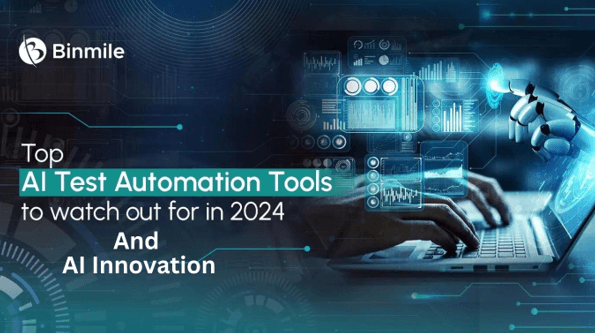Choosing the proper endpoint security means finding solutions that protect all network layers. This includes cloud, network, and hardware & software protection.
Protecting data assets against cyberattacks that can wreak havoc on your business is essential. But it would help if you started with basic hygiene. This includes antivirus and malware protection. The best tools leverage ML and AI to tackle the most advanced ransomware and phishing attacks that evade traditional antivirus.
Endpoint Encryption
Today, workers expect to be able to create and review corporate data on whatever device they have at hand. The good news is that this flexibility allows them to work more quickly and effectively. The bad news is that it also gives hackers more opportunities to expose private information or wreak havoc on the network.
To counteract this, endpoint encryption is essential. This feature encrypts files or data on an individual computer or device, making it impossible for malicious software to access the information in its unencrypted state.
In addition, full-disk encryption renders it impossible for attackers with physical access to a device to add malware or steal sensitive information. However, this type of security eliminates some threats, so deploying other endpoint security components is essential. This includes web filtering, which blocks users from browsing questionable websites. Similarly, application control limits the function of specific applications. And extended detection and response (XDR) collects and correlates data across multiple sources to identify advanced threats. This can prevent security collapse.
Endpoint Data Loss Prevention
An endpoint data loss prevention (EDLP) system protects sensitive information against unauthorized file access, leakage, or theft. It scours endpoint devices for potential threats, including workstations, laptops, tablets, smartphones, and other mobile devices integral to today’s digital workplace. This includes malware, spyware, phishing, and ransomware attacks. It also scrutinizes data movement to ensure no confidential or proprietary information leaves the company network. This type of security solution manages privileged access, and it is typically more comprehensive than antivirus/antimalware solutions that only focus on virus signatures.
EDLP policies can be curated to address the most critical and sensitive enterprise data, such as private cloud storage uploads, E-mail exchanges with attachments, printers, or USB mass storage devices from a centralized console. Additionally, EDLP is not dependent on the company network to function. It can be enforced even when a device is offline, such as when employees copy confidential files to their USBs. This is essential in protecting sensitive data against unauthorized leaks and helping companies comply with industry regulations.
Endpoint Data Protection
Endpoint data protection is essential for all devices, both desktops and mobile, on and off the network. This includes encryption for data at rest, detection of sophisticated attacks in real-time, and blocking persistent attackers from compromising environments and stealing data.
Even with the best security tools and processes, attackers occasionally slip through defenses. Unfortunately, conventional security can’t see these “silent failures,” allowing attackers to dwell in the environment for days, weeks, and sometimes months.
Modern EPP solutions can also monitor suspicious activity on the device, such as attempts to access or manipulate files or applications. Those activities are often precursors to a lateral attack. Attackers exploit privileged access to gain an initial foothold, then move laterally to the network, attacking other endpoints and assets. This can expose the entire organization to financial and reputational damage, causing significant disruption. Including a continuous EPP solution in your cybersecurity strategy is essential.
Endpoint Privacy
With the rapid rise of remote work, attackers have a wide range of entry points to compromise devices and access corporate data. To mitigate these threats, businesses need comprehensive endpoint protection. This is more than antivirus software but includes device control, privilege management, and security controls.
Most endpoints have more system privileges than needed, and many are persistent. Attackers exploit these privileged assets to gain initial footholds and advance laterally on the network. Endpoint protection solutions reduce benefits and enforce least-privilege practices on device hardware and software to limit these attacks.
This minimizes the attack surface, simplifies compliance and audibility activities, and improves overall security. Additionally, these solutions may encrypt files or an entire device (full disk encryption), making it impossible for threat actors to steal sensitive data. In addition to protecting data on the device, these solutions may detect and protect against lateral movement across networks by detecting and alerting administrators of any suspicious behavior. This is particularly important because the average workplace now includes employees’ devices and insecure Wi-Fi networks.
Endpoint Data Recovery
Many businesses rely on BYOD (bring your device) and remote work policies to enable employees to access information from home or other locations away from the corporate network. This has heightened the security risks of these endpoints, which are often less protected than those in the office.
Traditional signature-based antivirus and antimalware solutions are not enough to protect these devices. These solutions typically use a database of virus signatures to identify threats on the endpoint, but new malware attacks are frequently developed that bypass these solutions. In addition, research indicates that these traditional AV tools miss an average of 60 percent of attacks.
An essential part of endpoint protection is deploying backup software that regularly sends copies of critical data to remote, secure file storage. This helps prevent data loss from ransomware, natural disasters, and human errors. This process can also recover lost files deleted or overwritten on the endpoint. These backups can be retrieved and restored quickly to minimize the impact of any cyber threats that can slip past your other security layers.







